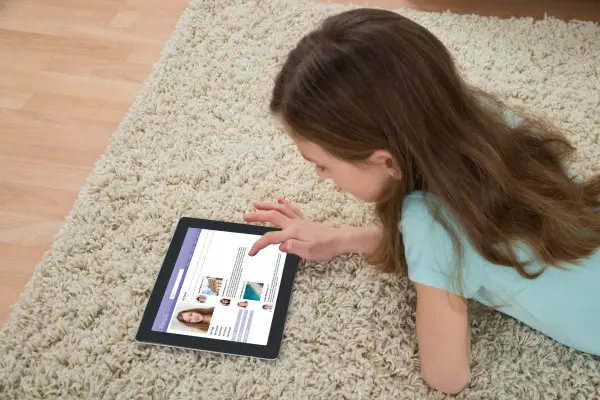A First Long-Term Study Shows How Even 2 Hours Of Screen Time Can Damage A Child’s Brain
Tags: opinion

By Mayukh Saha
Taking care of children has always been a hectic job. Keeping tabs on them, making sure that they learn something new every day (must be the right thing), and keeping them interested – these simple tasks seem almost impossible to manage. Don’t get me wrong, most of us love to do them, but we could all do with a bit of help. With the rising technology, this is where Smartphones actually drop in to help. Loaded with intelligent apps, Smartphones are the perfect assistants that not only keep your children busy but also make them learn something. You can put on Lego games and see their architectural skills flourish. But are they actually helping them?
What the new study says
The National Institutes of Health has started to conduct a first-of-its-kind study to understand how screen time can affect children’s brains. They will keep track of about 11,000 children between the ages of 9 and 10, monitoring them, and observing how long they are using smartphones and how it is affecting them. One of the study’s chief author, Gaya Dowling claims that it will give them crucial insights into screen addiction.
Early results don’t look good
While the study is still taking place, early results have already come out. And it is not looking very good. Early results have shown that even about 2 hours of screen interaction can turn out to be detrimental for the brain of your child. As the study monitors brain activities too – the children who had been using the screens were told to take tests on language skills and cognitive activities. The results were striking – they actually scored lower than the standard expected from children.
How could such a seemingly wonderful, learning technology turn out to be detrimental? Dr. Dimitri Christakis has the answer – and it’s quite simple. When children are using phones, they are actually interacting with 2D objects and learning 2D skills. The problem is – they don’t live in a 2D world. When they lift their eyes from the 2D world and encounter the 3D world that they live in, then reality smacks on their face. They can’t really comprehend how to interact with this whole new 3D (real) world that they are facing. They have to learn again – and this learning will be difficult since they have to separate it from what they have already learned from their screen experience.
A really simple experiment could be done to prove this. Let’s say you want to see your child use their brain and creativity and build their own LEGO structure on screen, using virtual Lego blocks in the controlled virtual world. Then, when you place the actual Lego blocks before them, they might get confused. They have to learn the interaction all over again – taking a lot more time than usual.
The American Academy of Pediatrics comes to the rescue
Brain scans have revealed something terrible – children who spend more than seven hours of their day on a screen can have a premature thinning of their cortex. That is terrible, and as parents, we should be concerned. The American Academy of Pediatrics suggests that there should be strong limitations placed on the interaction of children with smartphones. Recently, screen-time guidelines published by them emphasize face-to-face communication between parents and children when they are 18-24 months old. Screen times, if necessary, should only be limited to video calling. If children are allowed screen time, they should be constantly kept under watch. Co-viewing is the best option – on one hand, the children are experiencing something 2D but on the other, they are with another person delivering the balancing 3D interaction, necessary for a child to learn and grow.
Over 5000 people have downloaded our free ebook “Growth Hacking Tips And Rituals For Optimal Living” CLICK HERE to get your free copy now
Looking to solidify some ground rules
The guidelines are based on the early findings of the study. While it can be followed, there needs to be a solid base for it, which the completion of the study would guarantee. The NIH study has already enrolled 11,000 students as participants for the research. They are hopeful that once the study is over, it will bring up new fields of research and can show the researchers whether screen addiction is real or not. Also, how harmful it can be – which, as of now, looks almost apocalyptic! We could have better guidelines in the future too.
The world is changing fast – too fast for us to cope. We don’t know whether the technology we are using for its benefits actually delivers on it or not. The human brain is complicated. It is best that we use tried-and-tested methods of the past until this new technology shows us what it actually brings onto the table.
IMAGE CREDIT: Andriy Popov
Leave Comment: